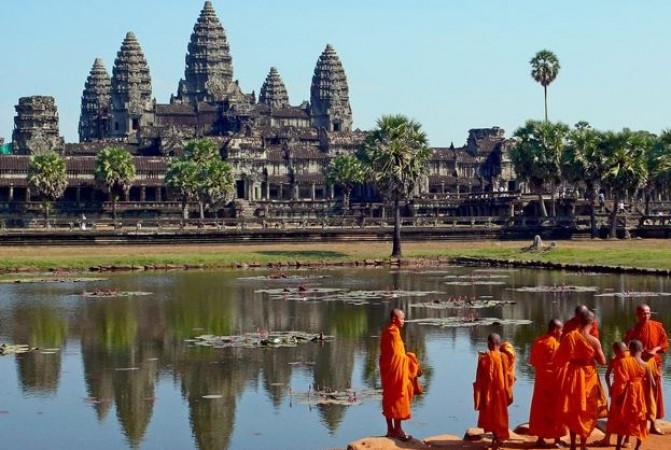
Angkor Wat is an awe-inspiring Hindu temple complex located in Cambodia. Steeped in history and surrounded by lush greenery, it stands as a testament to the grandeur and architectural brilliance of the Khmer Empire. Built in the 12th century by King Suryavarman II, Angkor Wat is not only a significant religious site but also a symbol of national pride for the people of Cambodia.
The construction of Angkor Wat began around 1113 AD and took an estimated 30 years to complete. The temple was originally dedicated to the Hindu deity Vishnu, a central figure in Hinduism known as the preserver and protector of the universe. Its name "Angkor Wat" translates to "City of Temples," reflecting the vastness of the complex.
Covering an area of over 400 acres, Angkor Wat is the largest religious monument in the world. Its design follows the architectural style of the Khmer Empire, with a central pyramid-like structure representing Mount Meru, the mythical home of the gods in Hindu cosmology. The temple is surrounded by a vast moat, which adds to its grandeur and magnificence.
Angkor Wat boasts a series of galleries adorned with intricate bas-reliefs depicting scenes from Hindu mythology, historical events, and the everyday life of the Khmer people. These carvings are a remarkable fusion of art and spirituality, showcasing the creativity and craftsmanship of the Khmer Empire. They provide valuable insights into the culture, beliefs, and traditions of the time.
Despite being originally dedicated to Vishnu, Angkor Wat underwent significant religious transformations over the centuries. In the late 13th century, the Khmer Empire shifted from Hinduism to Theravada Buddhism, and the temple gradually transformed into a Buddhist site. Many of the Hindu statues were replaced with Buddhist ones, reflecting the religious and cultural changes that took place in the region.
Over time, the once-thriving Khmer Empire declined, and Angkor Wat was abandoned and swallowed by the dense jungle. It wasn't until the 19th century that the temple was rediscovered by the Western world. French explorer Henri Mouhot played a crucial role in bringing Angkor Wat to the attention of the international community. His accounts and sketches sparked immense interest in the temple and laid the foundation for its restoration and preservation.

Today, Angkor Wat is a UNESCO World Heritage site and one of the most popular tourist destinations in Southeast Asia. Its stunning architecture, serene surroundings, and spiritual atmosphere continue to captivate visitors from around the globe. The temple complex is not only a place of worship but also a living testament to the rich history, cultural heritage, and artistic achievements of the Khmer Empire.
Preserving Angkor Wat is an ongoing endeavor. Conservation efforts are focused on maintaining the structural integrity of the temple, preventing further deterioration, and protecting the delicate bas-reliefs from environmental factors and human activity. These initiatives aim to ensure that future generations can continue to marvel at the magnificence of Angkor Wat and appreciate its historical and cultural significance.
Angkor Wat stands as a majestic reminder of the Khmer Empire's glorious past and the enduring power of human creativity. Its fusion of spirituality, artistry, and architectural brilliance makes it a true wonder of the world. As visitors explore its corridors, climb its towers, and gaze at its breathtaking vistas, they are transported to a bygone era, where gods and mortals converged in a realm of beauty and devotion.
France celebrates Narendra Modi of India at Bastille Day extravaganza
IEA Lowers Oil Demand Forecast as Economic Headwinds Mount
World Hunger Still Rising, Far Off Track to Be Eradicated by 2030, UN Warns